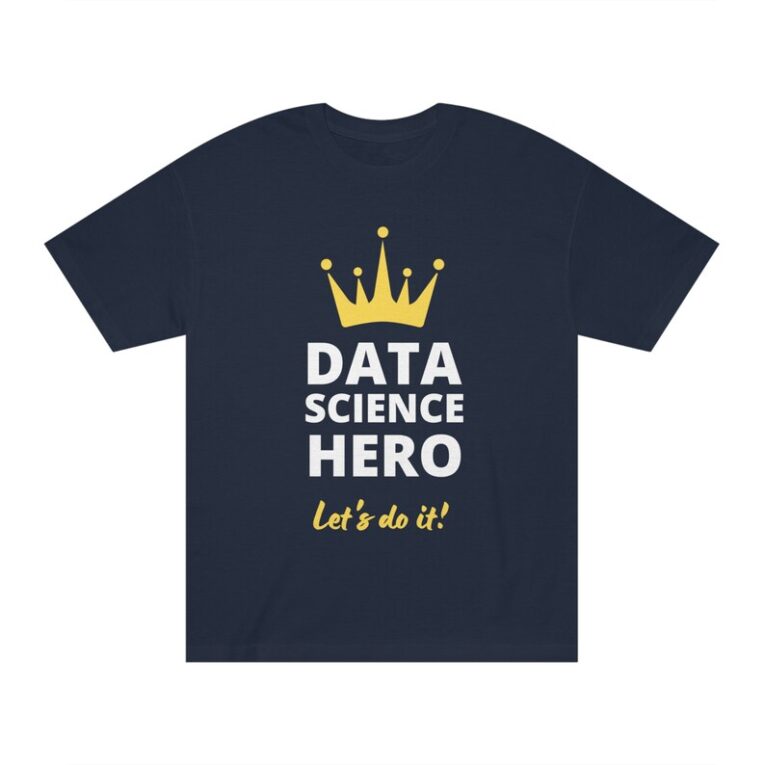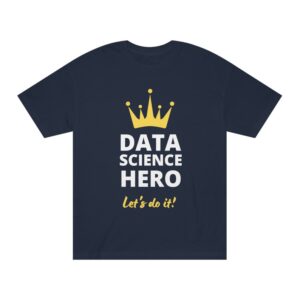In today’s data-driven world, the role of a data scientist is both crucial and multifaceted. Success in this field requires a blend of various skills and attributes. While technical proficiency and domain knowledge are important, four key elements stand out as the foundation for a successful data scientist: logical thinking, an insatiable hunger to learn and research (including a solid foundation in mathematics and statistics), a passionate drive to implement solutions, and strong communication skills. In this article, we will delve into these four pillars, illustrating their significance with examples and explanations.
- Logical Thinking
Logical thinking is the backbone of data science. It involves the ability to reason systematically and solve problems effectively. This skill allows data scientists to break down complex problems into manageable parts, analyze data methodically, and draw accurate conclusions.
Example: Data Cleaning and Preprocessing
One of the fundamental tasks in data science is data cleaning and preprocessing. A data scientist receives raw data, which often contains missing values, outliers, and inconsistencies. Logical thinking is essential to devise a strategy to handle these issues. For instance, suppose a dataset contains missing values in critical columns. A data scientist with strong logical thinking skills will:
- Identify the nature of the missing data: Determine if the data is missing at random or follows a pattern.
- Choose an appropriate method to handle it: Decide whether to impute the missing values using techniques such as mean imputation, median imputation, or more sophisticated methods like k-nearest neighbors (KNN) imputation, or to remove the affected rows or columns.
By applying logical thinking, the data scientist ensures that the preprocessing steps are systematic and do not introduce biases or errors into the analysis.
Example: Model Selection
When building predictive models, logical thinking is crucial for selecting the right algorithm. Consider a scenario where a data scientist needs to predict customer churn for a subscription-based service. The data scientist must evaluate different models such as logistic regression, decision trees, and random forests. Logical thinking helps in:
- Understanding the data characteristics: Analyzing the distribution of features and the target variable.
- Evaluating model assumptions: Considering assumptions like linearity in logistic regression or the independence of features in naive Bayes.
- Comparing performance metrics: Using cross-validation to compare models based on accuracy, precision, recall, F1 score, and other relevant metrics.
Logical thinking enables the data scientist to choose the most suitable model, ensuring robust and reliable predictions.
- Hunger to Learn and Research
The field of data science is constantly evolving with new algorithms, tools, and technologies emerging regularly. A successful data scientist must possess an insatiable hunger to learn and stay updated with the latest advancements, coupled with a strong foundation in mathematics and statistics.
Example: Mastering Mathematics and Statistics
A solid grasp of mathematics and statistics is fundamental for understanding and developing machine learning models. For instance, linear algebra is crucial for understanding algorithms such as principal component analysis (PCA) and singular value decomposition (SVD), while probability and statistics are the backbone of algorithms like Bayesian networks and Markov chains. Data scientists eager to learn will continuously enhance their knowledge in these areas to improve their analytical capabilities.
Example: Staying Updated with Cutting-edge Techniques
In recent years, advancements in natural language processing (NLP) and computer vision have transformed various industries. A data scientist eager to learn will explore these advancements by reading research papers, attending conferences, and participating in online courses. For instance, learning about transformer architectures like BERT and GPT-3 can significantly enhance a data scientist’s ability to work with text data.
Example: Conducting Research to Solve Complex Problems
Consider a data scientist working in healthcare to predict disease outbreaks. Traditional models might not capture the complex interactions between various factors. By engaging in research, the data scientist can explore advanced techniques like graph neural networks (GNNs) to model the relationships between different entities such as patients, hospitals, and environmental factors. This research-driven approach can lead to more accurate and insightful predictions, ultimately benefiting public health.
- Passion to Implement
While logical thinking and continuous learning are essential, the true measure of a data scientist’s success lies in their ability to implement solutions. Passion for implementation drives data scientists to transform theoretical knowledge into practical applications that solve real-world problems.
Example: Deploying Predictive Models
A data scientist might develop a highly accurate predictive model, but its value is realized only when it is deployed in a production environment. Consider a scenario in which a data scientist develops a recommendation system for an e-commerce platform. The implementation involves:
- Collaborating with software engineers: Ensuring the model integrates seamlessly with the existing system architecture.
- Monitoring and maintenance: Continuously monitoring the model’s performance and retraining it with new data to maintain accuracy.
- User feedback: Collecting and analyzing user feedback to refine the recommendations.
Passion for implementation ensures that the model is not just an academic exercise but a practical tool that enhances the user experience and drives business growth.
Example: Automating Data Pipelines
Efficiency in data processing is crucial for timely insights. A passionate data scientist looks for opportunities to automate repetitive tasks. For instance, consider a financial analyst who spends significant time aggregating and cleaning data from various sources. By implementing automated data pipelines using tools like Apache Airflow or AWS Glue, the data scientist can streamline these processes, allowing more time for in-depth analysis and strategic decision-making.
- Communication Skills
Effective communication is essential for data scientists. They must be able to explain their findings and insights to non-technical stakeholders and team members in a clear and concise manner. Good communication skills help in bridging the gap between technical and business teams, ensuring that data-driven insights lead to actionable strategies.
Example: Presenting Findings to Stakeholders
Imagine a data scientist who has analyzed customer behavior data and identified key factors influencing churn. To convince the marketing team to take action, the data scientist needs to present the findings in a way that is easily understood. This involves:
- Using visual aids: Creating intuitive charts and graphs that highlight the key insights.
- Telling a story: Framing the data in a narrative that explains the implications and potential actions clearly.
- Engaging the audience: Answering questions and addressing concerns in a way that builds confidence in the analysis.
Example: Writing Clear Documentation
Data scientists often need to document their methodologies, findings, and code. Clear documentation ensures that others can understand and replicate their work. For instance, when working on a collaborative project, well-documented code and detailed reports help team members and future data scientists to build upon the existing work efficiently.
Conclusion
In conclusion, the success of a data scientist hinges on a combination of logical thinking, a relentless desire to learn and research (including strong mathematical and statistical skills), a passion for implementation, and strong communication skills. Logical thinking ensures systematic problem-solving and accurate conclusions. An unquenchable thirst for knowledge keeps the data scientist at the forefront of technological advancements. Passion for implementation ensures that theoretical insights translate into practical solutions. Finally, effective communication bridges the gap between technical and business teams, driving actionable and impactful strategies.
By cultivating these four pillars, aspiring data scientists can navigate the complexities of the field, contributing valuable insights and solutions across various industries. Whether it’s through developing predictive models, automating data processes, staying updated with cutting-edge research, or communicating effectively with stakeholders, these qualities will pave the way for a successful and fulfilling career in data science.

